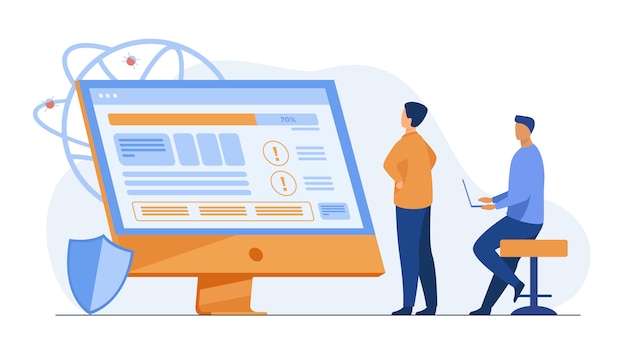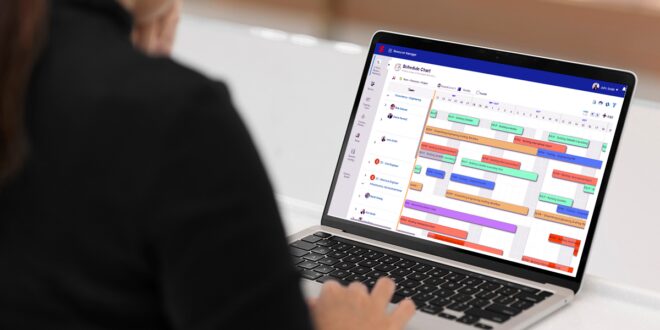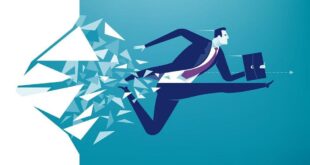“91% of organizations that use resource management solutions reported an improvement in project delivery.” – Deloitte
The above stat highlights the significance of such solutions in achieving business goals. With the ever-increasing complexity of modern businesses and rapid technological advancements, it has become necessary to adopt resource management software to ensure competent workforce allocation, reduce resourcing costs, enhance productivity, and more.
However, with various resource management software options available in the market, selecting the right one can be daunting for businesses. Therefore, before deciding, companies must consider various features like UI/UX, licenses, BI analytics, configurability, etc., and ensure they choose the solution that best fits their needs.
This article discusses the various criteria to consider before selecting an ERM tool and how SAVIOM’ s resource management software is the right one for your firm.
Let’s begin!
1. Business benefits of a resource management solution

Managing resources efficiently is essential to boost business profitability and improve sustainability. Therefore, leveraging advanced resource management solutions helps managers appropriately utilize global resources from low-cost locations and reduce project resource costs. It also ensures that the right resources are allocated to suitable projects at the right time and cost. This improves productivity and eliminates deploying under-skilled or over-skilled resources in a project.
In addition, with resource management solutions, managers can plan and anticipate resourcing needs for future projects. Accordingly, suitable project resourcing treatments can be applied to mitigate skill gaps in advance and avoid last-minute firefighting of resources. It also helps in creating a skilled and future-ready workforce.
Furthermore, resource management helps organizations regularly monitor and improve billable and strategic resource utilization. Lastly, the tool offers real-time insights into various project and resource metrics that help senior management to make informed decisions and address bottlenecks promptly.
Now that we know the benefits, let’s understand the various criteria for choosing the right ERM software.
2. How to select the best resource management solution?

Organizations must leverage the right resource management software to unleash the maximum potential of resources and ensure profitability. Listed below are some benchmarks for selecting the right one:
1. Assess the business requirements
The first step in selecting the software is to evaluate the business needs and identify the short-term and long-term goals. Following that, firms must identify various resource management challenges, such as lack of resource visibility, improper allocation, over/underutilization, etc. By conducting a thorough analysis of these factors, organizations can better understand their resource management needs and identify a suitable software solution.
2. User interface/user experience
One of the essential factors to consider while selecting a resource management solution is its user interface and user experience. The interface should be intuitive and informative to end-users, allowing them to navigate the tool seamlessly and efficiently. Further, a good UI/UX design should motivate the users to spend more time on the product, thus creating a positive brand image and leading to higher user satisfaction.
3. Scalability, configurability, and expandability
When selecting a resource management solution, it is essential to consider scalability, configurability, and expandability. The software must accommodate more users as the business expands without compromising the responsiveness of the tool. Further, the system admins should easily be able to configure the software as per unique business needs. This ensures that the software remains adaptable to meet the organization’s changing business requirements without requiring additional investments.
4. Features and functionalities
While selecting a tool, organizations must look into its advanced features and functionalities. This includes 360-degree visibility, a competency matrix, and advanced filters that enable managers to identify and allocate the right resources to projects. Further, the tool should possess forecasting, capacity planning, and scheduling capabilities that streamline the resourcing process.
5. Business Intelligence

In ERM software, BI is an essential component that provides real-time insights and analysis of the resource/project data, helping the firm make informed and quick decisions. Therefore, the BI should offer customizable reports, analytics, and dashboards. Moreover, the tool should allow companies to export graphs/ reports in a specific format for better data comprehension. Lastly, the software must provide role-based access and the ability to slice/dice information for accurate resource details.
6. Integration with existing systems
To select the best resource management solution, it is crucial to find software that integrates smoothly with existing systems like CRM and HRM. Hence, look for a tool with an open API that can import/export data using excel or CSV files and be integrated with everyday applications such as email messaging, MS Office, calendar, etc. This allows real-time data exchange, promotes better collaboration and faster decision-making.
7. Customer support
Selecting a resource management solution with reliable customer support is crucial to resolve issues quickly and maximizing the tool’s potential. Organizations must identify a vendor that can provide round-the-clock assistance through multiple communication channels like email, phone, live chats, knowledge base, etc., to address any queries. In addition, they should provide access to training resources to help users learn the tool and troubleshoot issues on their own.
8. Pricing
It’s crucial for organizations to carefully evaluate the pricing of software to ensure they get the best value. The pricing should cover factors such as the number of users/ licensing fees, customization, and features. Further, it must specify the subscription renewal procedure, whether it is one-time, monthly, or yearly. Moreover, organizations need to assess the expenses for maintenance and support, upgrades, integration, training, documentation, etc. Also, one should be vigilant in reviewing the pricing policy to avoid any undisclosed charges.
Now that we know the criteria let’s know the features of an advanced ERM tool.
3. How is futuristic resource management software a need of the hour?

Modern resource management software is one of the most configurable solutions that help boost your business productivity and profitability.
Here’s how:
- Multi-dimensional resource scheduler: The tool provides 360-degree visibility into resource information like skills, experience, qualifications, availability, etc. Also, it offers advanced filters that help managers narrow their search according to project requirements. As a result, best-fit resources are allocated to suitable projects.
- Forecasting & Capacity planning: The robust forecasting and capacity planning capabilities help foresee the resource shortage/excess and take applicable measures to bridge the gaps. This reduces last-minute firefighting of resources and ensures that employees are available before the project’s onset.
- Real-time BI: The software offers real-time reports like the forecast vs. actual and utilization that helps managers implement corrective measures and eliminate under/over utilization.
- Modeling & Scenario modeling: The modeling and simulation technique enables managers to create and compare various project scenarios and determine the best-fit resource plan.
- Open seat feature: Managers can use the open seat feature of the tool to publish various vacant positions. This will empower the workforce to choose projects of interest, thus improving engagement and productivity.
- Integration: The tool integrates with any of your systems for seamless import and export of the data.
In a nutshell, powerful tools help firms streamline their resource management process and run businesses smoothly.
Bottom line
A well-structured resource management process helps organizations manage and utilize their workforce efficiently, ensuring better project quality. This can be further improved by leveraging advanced resource management software. Following the above suggestions, companies can select software that best fits their businesses. This will help them reduce resourcing costs, boost productivity and mitigate bottlenecks, thereby increasing profitability.
 Imagup General Magazine 2024
Imagup General Magazine 2024



